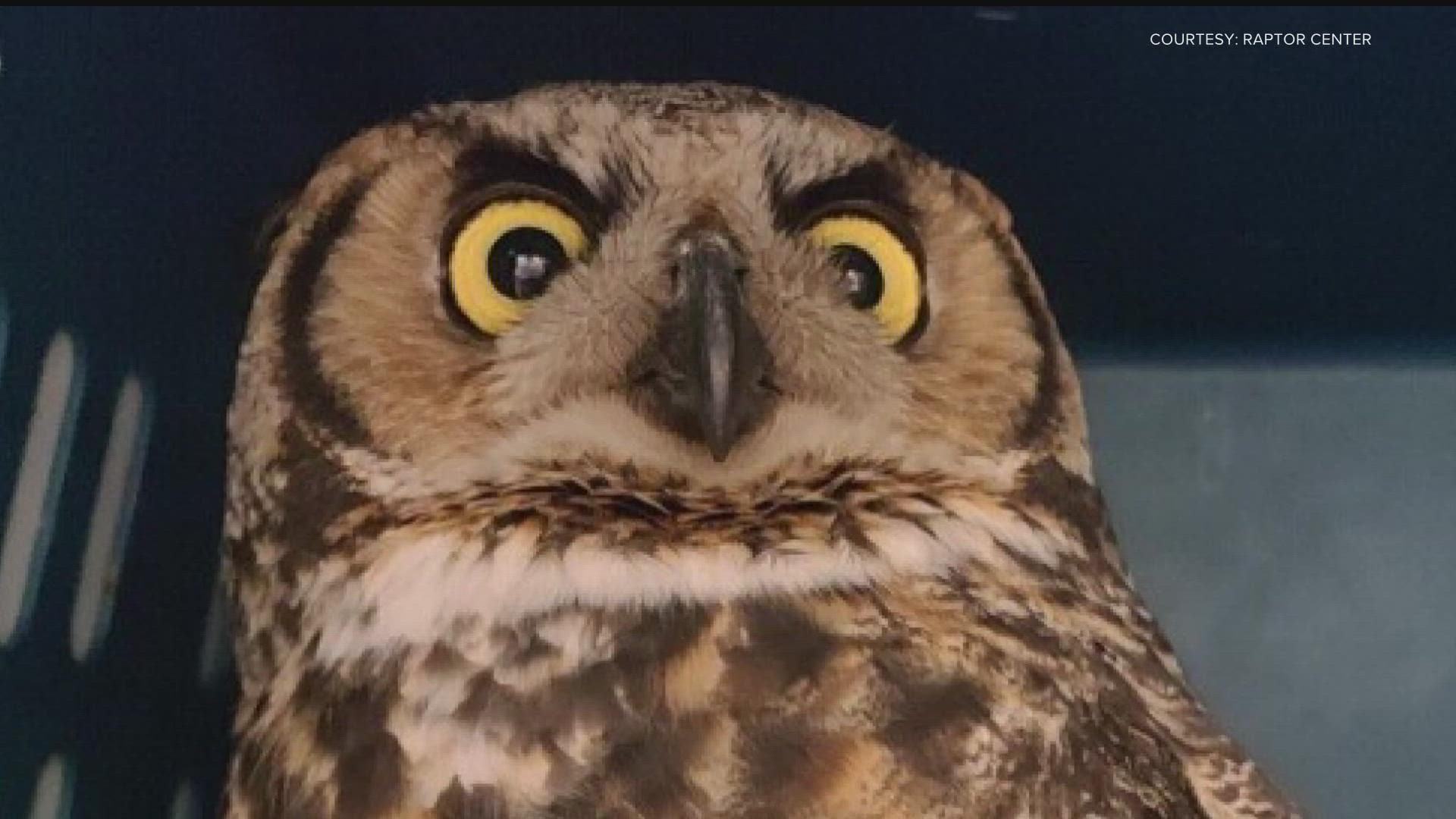ST PAUL, Minn. — The University of Minnesota Raptor Center was prepared for the worst as news of a particularly deadly — and widespread — strain of avian influenza began making it's way toward Minnesota.
"We have stood up a separate building for triage and testing, and quarantine of incoming birds," said Dr. Victoria Hall, executive director of the Raptor Center during an interview with KARE11 at the beginning of April.
Just three weeks later, despite all of the knowledge and preparation, Dr. Hall says her team is struggling with their new reality.
"We have not seen an outbreak like this," she said.
Dr. Hall says 42% of the birds taken in by the Raptor Center this month have tested positive for the Highly Pathogenic Avian Influenze. That's a total of 39 raptors, including 17 Great Horned Owls and 14 Bald Eagles.
She says all but one of those birds have died.
Dr. Hall: "This virus, in raptors, is devastating and these birds are coming in with severe signs of illness. Some of them are having non-stop seizures or they are unable to stand. Some are just not responsive at all, and there is probably a good amount of suffering involved."
Erdahl: "As a staff, I can't imagine what that's like for so many people who are so dedicated to these animals."
Dr. Hall: "The Raptor Center is here to help birds, and we're definitely helping birds during this huge outbreak, but it is incredibly, incredibly beating up the staff. They have terrible signs, really the only tool we have left for this severe illness is humane euthanasia. We know that we're still helping birds, but man... it is incredibly emotional and challenging right now for staff."
Fortunately, Dr. Hall says the strict biosecurity protocols and triage protocols have worked, allowing the Raptor Center to keep the virus from spreading to their other patients.
"We have had some great stories of young Great Horned Owls that have come out of their nests," she said. "These are little babies that — because of our quarantine and because we could do quick testing on them — we've been able to get them back out into owl families, which is where baby owls need to be."
And then there's that one bright spot, a Great Horned Owl that initially tested positive, but after careful care, is now virus free and appears healthy.
"It's still got a very, very long and unknown road ahead of it, of what this virus does long term, but at least it's a little bit of hope to the team," she said. "At least one bird has been able to survive, at least the first stage of the virus."
Dr. Hall says the uncertainty about that owl's future, shows just how little is known about the virus.
"We have to remember that we are only testing and counting the ones that make it to the Raptor Center. We're getting many, many more calls from people who have found birds dead in the wild, and those are not currently being captured in the data," he said.
She says the Minnesota DNR is working to address that gap. If you locate a dead raptor, with no clear sign of death, click here or call 888-646-6367. If you see a raptor injured or in distress, she asks that you contact the Raptor Center by clicking here or calling 612-624-4745
"The virus particle is very hearty, you can take it on your shoes, on your clothes on different equipment," Dr. Hall said. "So if you find an ill, injured or dead bird, we'll be able to give you the guidance on how you make sure you protect yourself and how to make sure you don't accidentally spread virus particles. So give a call and get some advice before you intervene with birds right now."
Watch more Breaking The News:
Watch all of the latest stories from Breaking The News in our YouTube playlist:

